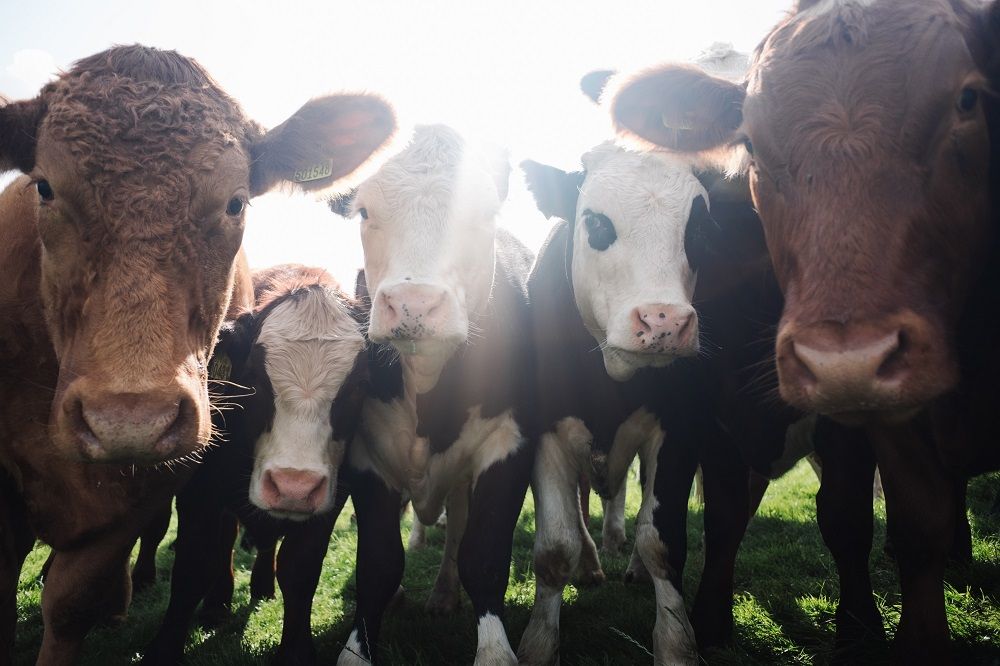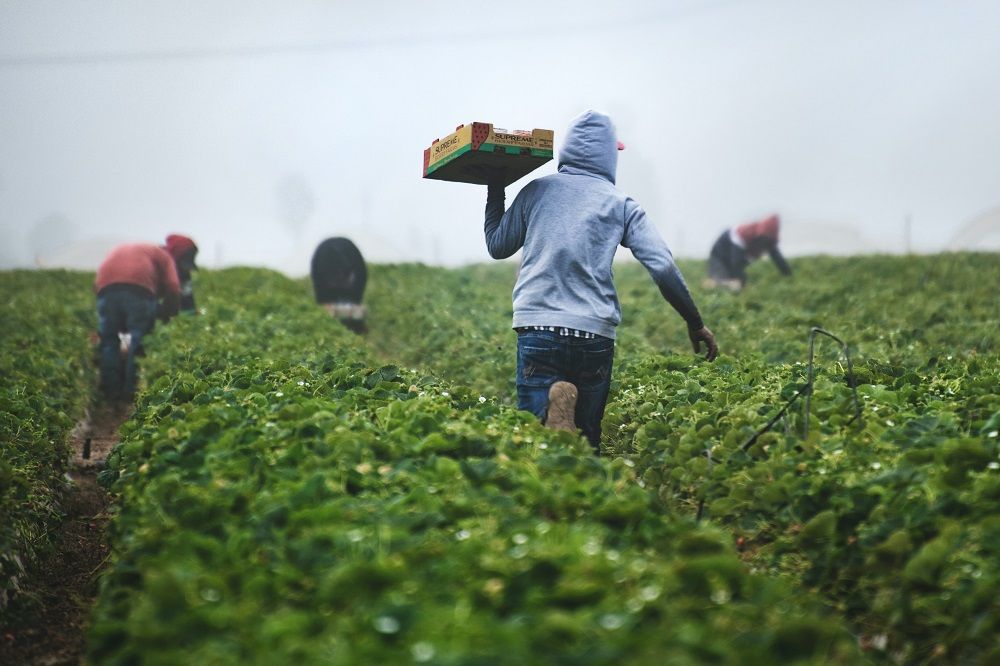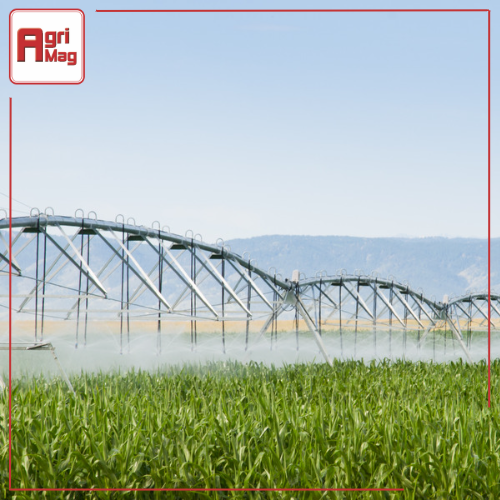
In the Know: Regenerative Farming Questions and Answers
Date: 15/03/2023
Regenerative farming is becoming increasingly popular among farmers and consumers alike as it offers a sustainable and environmentally friendly way of producing food. However, many people still have questions about this farming method, such as what it entails, how it differs from traditional farming methods, and what its benefits are. In this article, we will go over some of the most frequently asked regenerative farming questions and answers to provide an easy-to-understand guide for anybody wanting to find out more. Are you a farmer looking for farming equipment? Visit AgriMag today and find a wide variety of machinery and implements at affordable prices.
1. What is regenerative farming?
Regenerative farming is a type of farming that rebuilds soil health, enhances ecosystem services, and improves farm system resilience to climate variability and other stressors. It involves using practices such as crop rotation, cover cropping, reduced tillage, and the integration of livestock and trees to create a self-sustaining, closed system that improves soil fertility, water retention, and biodiversity over time.

2. What is the purpose of regenerative farming?
The purpose of regenerative farming is to restore and maintain the health and fertility of the soil by using practices that promote biodiversity, conserve water, reduce erosion, and increase organic matter (decaying plant and animal materials that are added to soil). This type of farming aims to create a self-sustaining and closed system where soil health is improved through a holistic approach, leading to increased yields and improved food quality, while also reducing the need for inputs like synthetic fertilisers, pesticides, and water. Additionally, regenerative farming practices can mitigate climate change by sequestering carbon in the soil, improving soil health, and reducing greenhouse gas emissions.
3. How is it different from conventional agriculture?
Regenerative agriculture is an agricultural production system that focuses on restoring, renewing, and revitalising the soil and ecosystem. It is based on the principles of agroecology and works with natural processes to increase biodiversity, improve soil health, and enhance ecosystem services. In regenerative agriculture, the focus is on creating a sustainable and regenerative system that mimics the natural processes of ecosystems.
Conventional agriculture, on the other hand, is a more traditional form of agriculture that uses large amounts of synthetic fertilisers, pesticides, and other chemicals to grow crops. This type of agriculture often results in soil degradation, loss of biodiversity, and negative impacts on the environment. The focus in conventional agriculture is on maximising yield and productivity, which is often achieved through the use of synthetic inputs and monoculture cropping systems.
The short version: the main difference between regenerative agriculture and conventional agriculture lies in their approach to agriculture and their goals. Regenerative agriculture seeks to create a sustainable and regenerative system that supports the environment, while conventional agriculture prioritises maximising productivity and yield through the use of synthetic inputs.
4. What are the key principles of regenerative farming?
Holistic management takes into account the interrelationships of soil, water, plants, animals, and humans to create a healthy and sustainable ecosystem. Soil health focuses on improving soil structure, fertility, and biological activity to support plant growth and increase carbon sequestration. Biodiversity promotes a diverse range of plants and animals to maintain ecosystem resilience and support natural pest control. Reduced tillage minimises soil disturbance to conserve soil moisture and organic matter, and to encourage the growth of soil microorganisms. Cover cropping plants a diverse mix of crops to protect soil, fix nitrogen, and improve soil health. Composting and organic matter management use compost and other organic matter to improve soil fertility and increase carbon sequestration. Livestock integration uses animals in a rotational grazing system to improve soil health and manage forage resources. Holistic financial planning takes into account the long-term ecological and financial sustainability of the farming operation.
5. What are the economic and environmental benefits of regenerative farming?
They include improved crop yields, reduced dependence on chemical inputs, and increased income from the sale of organic products. When it comes to environmental advantages, it can reduce soil erosion, improve water quality, and increase carbon sequestration in the soil. This can help mitigate the effects of climate change, while also helping to preserve biodiversity.
6. What role does soil health play in regenerative farming?
Healthy soil is essential for growing healthy plants, which in turn feeds and sustains the local ecosystem. Proper soil health helps promote water retention, nutrient cycling, and biodiversity, which are all important for a productive and sustainable farm. Healthy soil also helps reduce erosion, air, and water pollution, and it increases the soil's ability to absorb and store carbon. Regenerative farming practices, such as cover crops, no-till practices, and composting, help increase soil organic matter, improve soil structure, and promote the growth of beneficial organisms, all of which can help improve soil health.
Read: What are soil health indicators and how can they help your farm
7. What role does livestock management play in regenerative farming?
By improving the health and welfare of animals, we can improve the overall health of the land. Through rotational grazing and other management techniques, livestock can be used to improve soil fertility, increase biodiversity, and reduce erosion. Additionally, livestock can be used to convert unused crop residues into high-quality organic fertilisers that can be used to improve the fertility of the land. With careful management and an eye toward sustainability, livestock can be a powerful tool in the regenerative farmer's arsenal.
Read: How to use livestock for healthier soil
 Photo credit: Robert Bye on Unsplash
Photo credit: Robert Bye on Unsplash
8. What kind of positive impact does regenerative agriculture have on communities?
There are numerous ways this kind of farming can positively impact communities. Some of them include:
- It can provide economic benefits to farmers and local communities by increasing crop yields and improving soil health, which can lead to increased farm productivity and profitability.
- It often involves local communities in the planning and implementation of farming practices, which can help to build social capital and create a sense of ownership and pride in the land.
- It can lead to more resilient crops and less reliance on external inputs, which can increase food security and reduce the vulnerability of communities to food shortages and price fluctuations.
9. What kind of large-scale implementation difficulties might be encountered?
- Lack of awareness and education: Many farmers and policymakers may not be aware of the benefits of regenerative agriculture or may not have the knowledge and skills needed to implement these practices effectively. This can lead to resistance to change or ineffective implementation.
- Initial investment and transition costs: Switching to regenerative agriculture may require significant upfront investment in equipment, infrastructure, and training, as well as a period of transition during which yields and profits may be lower.
- Limited access to funding and support: Farmers may struggle to access financing, technical assistance, or marketing support to help them adopt regenerative practices, especially if they are small-scale or just getting started.
- Limited availability of regenerative inputs: Some regenerative agriculture practices, such as the use of cover crops or the application of natural soil amendments, may require specialised inputs that are not widely available or affordable.
- Lack of infrastructure for processing and distribution: Regenerative agriculture often involves smaller-scale and more diverse crops, which can pose logistical challenges for processing and distribution, especially in areas with limited infrastructure.
10. Can regenerative farming help mitigate climate change?
Yes, it can help mitigate climate change in several ways. Regenerative farming practices are designed to increase the carbon content in the soil, which can help to sequester carbon from the atmosphere and reduce greenhouse gas emissions. This is because healthy soils can store significant amounts of carbon, which is absorbed from the air through the process of photosynthesis and then incorporated into the soil by plants and microbes.
In addition to carbon sequestration, regenerative farming practices can help reduce the emissions of other greenhouse gases such as methane and nitrous oxide. For example, practices such as reducing tillage and using cover crops can increase the organic matter in the soil, which can reduce emissions of nitrous oxide, a potent greenhouse gas. Similarly, integrating livestock into crop production can help reduce emissions by allowing for better nutrient cycling and reducing the need for synthetic fertilisers.
Regenerative farming practices can also increase the resilience of farming systems to the impacts of climate change, such as droughts, floods, and extreme weather events. This is because practices such as building healthy soil, promoting biodiversity, and integrating crops and livestock can help improve the ability of farms to adapt to changing conditions and maintain productivity over the long term.
Overall, regenerative farming has the potential to be a powerful tool in the fight against climate change by sequestering carbon in the soil, reducing greenhouse gas emissions, and improving the resilience of farming systems to the impacts of climate change.
11. How can consumers support regenerative farming?
- Buy from regenerative farmers/choose organic or regenerative products
- Reduce food waste
- Support policies that promote regenerative farming
- Educate others
12. How long does it take to see the benefits of regenerative farming practices?
The time it takes can vary depending on a number of factors, such as the specific practices being used, the current state of the soil and ecosystem, and the climate in the region. In general, some benefits of regenerative farming can be seen in as little as a few years, while others may take longer to fully materialise.
For example, reducing or eliminating tillage can help improve soil health and water retention relatively quickly within a few years. Building soil organic matter through the use of cover crops and compost can also lead to increased soil fertility and water-holding capacity within a few years.
On the other hand, increased biodiversity and resilience to climate change may take longer to fully develop. For example, it may take several years for beneficial insect populations to recover after reducing or eliminating pesticide use, and it may take decades for soil carbon levels to increase significantly.
 Photo credit: Tim Mossholder on Unsplash
Photo credit: Tim Mossholder on Unsplash
13. What are some common misconceptions about regenerative farming?
- It’s not economically feasible. Studies have shown that regenerative farming can be profitable and can even lead to increased yields and reduced input costs over time.
- It’s just a trendy buzzword. Regenerative farming is based on a growing body of scientific research that demonstrates the benefits of practices such as cover cropping, reduced tillage, and diversified crop rotations.
- It’s only for small-scale farms. Many large-scale farms have successfully implemented regenerative practices, and there is increasing interest among mainstream agriculture organisations and agribusinesses to explore regenerative agriculture.
- It’s just a return to traditional practices. Regenerative farming is not just a return to traditional practices. Rather, it is a modern, science-based approach to agriculture that draws on the latest research in soil health, ecology, and agroecology.
- It’s anti-technology. Many regenerative farmers make use of a range of technologies, such as precision agriculture tools and digital soil mapping, to improve their farming practices and optimise their use of resources.
We hope you’ve found our regenerative farming questions and answers helpful. This method of farming is a sustainable and environmentally friendly way of producing food, and it offers many benefits over traditional farming methods. If you're a farmer looking for farming equipment for sale, visit AgriMag for a wide variety of machinery and implements at affordable prices.
Categories:
Common category
Category Search:
Latest articles:

What to Look for When Buying a Skidsteer Loader for Farming

Why Planning Early for the Planting Season Pays Off

Why Winter Feed Management is Crucial for Livestock Health



